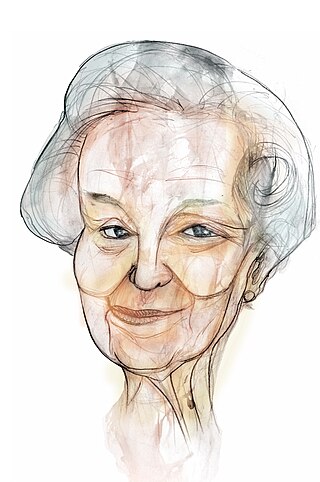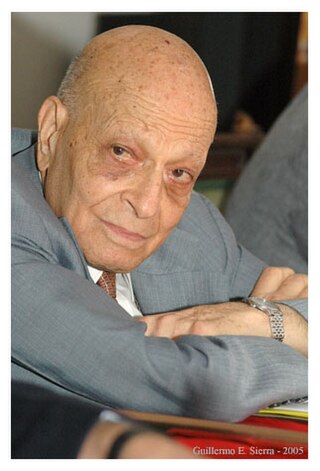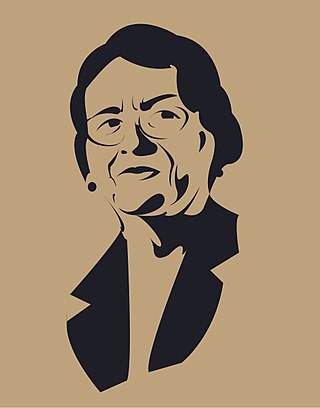César Batlle Pacheco was a Uruguayan journalist and political figure.

The Astronomical Observatory of Mallorca is an observatory just south of Costitx, Mallorca, Spain.

Gonzalo Tancredi is an Uruguayan astronomer and full professor in the Department of Astronomy at the University of the Republic in Montevideo, Uruguay. He is an active member of the International Astronomical Union (IAU) and investigator at Los Molinos Observatory.

María Assumpció Català i Poch was a Spanish professor, mathematician, and astronomer. She taught from 1952 to 1991. She started as an assistant in the Astronomy Section of the Seminar on Mathematics in Barcelona, related to the Spanish National Research Council. Later, she worked in the Henri Poincaré Institute and she also cooperated in some projects with the special chair of Technology in the Polytechnic University of Catalonia.
Antonia Ferrín Moreiras was a mathematician, professor and the first female Galician astronomer. Her main contributions to astronomy were works on stellar occultations by the moon, measures of double stars and astrometric measurements, as well as the determination of the passage of stars through two verticals. She accomplished all of this while she was working at the Observatory of the University of Santiago de Compostela (USC).

Adela Emilia Ringuelet was an Argentinian astrophysicist and astronomer at the Félix Aguilar Observatory in Argentina.

Jorge Sahade was an Argentine astronomer with more than 200 publications in journals and conferences. His mother gave birth on February 17, but having been born very little, it was thought that he would not survive, so he was officially entered late on February 23.

Esmeralda Herminia Mallada Invernizzi is a Uruguayan astronomer and professor who, for her contributions to that scientific discipline, has been honored with the designation of her name to an asteroid.
Ethel Afamado is a Uruguayan composer, poet, guitarist, and singer-songwriter.

Cecilia Vignolo is a Uruguayan visual artist, teacher, and communicator.

José María Maza Sancho is a Chilean astronomer and astrophysicist. His work has focused on the study of supernovas, the execution of a search for objects with emission lines, dark energy, and quasars with an objective prism, which led him to be awarded the National Prize for Exact Sciences in 1999. Since 2017 he gained popular following with books aimed to the general public and podcasts.

Anhelo Hernández Ríos was a Uruguayan plastic artist and teacher.

Glenda Eulalia del Rosario Rondán Freira is a Uruguayan professor and politician, currently a member of the Broad Front.

María Luisa Aguilar Hurtado, was the first professional astronomer of Peru. She studied at the Institute of Mathematics and Physics of the National University of San Marcos in Lima, Peru. She graduated as an astronomer from the National University of La Plata, Argentina. In 1981, motivated to develop astronomy at a professional level, she founded and served as director of the "Astronomy and Astrophysics Seminar", nowadays called "Permanent Astronomy and Space Sciences Seminar" of the National University of San Marcos.

Carolina Ache Batlle is a Uruguayan lawyer and politician of the Colorado Party who served as Deputy Minister of Foreign Relations from 1 March 2020 to 19 December 2022.

Miriani Griselda Pastoriza is an Argentine-born Brazilian astronomer, tenured professor in the Department of Astronomy of the Institute of Physics, at the Federal University of Rio Grande do Sul, and is a member of the Brazilian Academy of Sciences.
Teresa Paz Paneque Carreño is a Spanish-Chilean astronomer and writer.
Maritza Arlene Lara-López is a Mexican astronomer whose research interests include metallicity in galaxy formation and evolution and extragalactic astronomy. She is a participant in the Galaxy And Mass Assembly survey, and a researcher and Ramón y Cajal Fellow in the faculty of physical sciences at the Complutense University of Madrid.
Yolanda Gómez Castellanos (1962–2012) was a Mexican astronomer who studied interstellar clouds including planetary nebulae and compact H II regions. She became known for the discovery of water vapor through emissions from astrophysical masers associated with OH/IR stars and planetary nebulae, evidence for the extremely recent formation of the associated nebula.

Josefa Masegosa Gallego is a Spanish astronomer and scientific researcher. She is a winner of both the Granada, City of Science and Innovation award and the Mariana Pineda Award of Equality.














